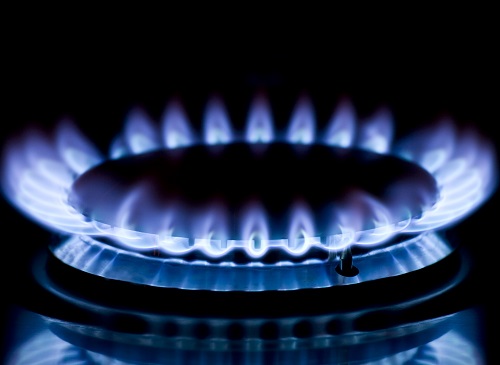US Natural Gas Slides on Mild Weather Forecasts, Lower Demand
(Reuters) — United States natural gas futures slipped to a near four-week low on Tuesday on forecasts for milder than normal weather and lower than usual heating demand through early November.

That price decline came as the market takes a break after collapsing 8% on Monday despite an intraday price spike in European gas of over 10% after Russian gas giant Gazprom failed to book much pipeline capacity to send additional fuel to Europe. That means Europe will remain reliant on other sources of gas - like U.S. LNG - to refill dangerously low stockpiles before the winter heating season.
In recent weeks, U.S. gas futures have mostly risen in lockstep with the spike in global gas prices.
Overseas gas prices soared to record highs as utilities in Europe and Asia scramble to refill inventories. U.S. prices jumped to their highest since 2008 a couple weeks go as competition for U.S. LNG remains strong.
But no matter how high global prices rise, U.S. LNG export plants were already operating near full capacity and will not be able to produce more LNG until later in the year.
And U.S. gas inventories, unlike those in Europe, were in good shape for the winter with more than enough fuel available for the upcoming heating season.
Analysts expect U.S. gas inventories will top 3.5 trillion cubic feet (tcf) by the start of the winter heating season in November, which they said would be a comfortable level even though it falls short of the 3.7 tcf five-year average.
In Europe, analysts say stockpiles are about 15% below normal for this time of year. Front-month gas futures fell 6.1 cents, or 1.2%, to $4.928 per million British thermal units (mmBtu) at 8:24 a.m. EDT (1224 GMT), putting the contract on track for its lowest close since Sept. 22.
Data provider Refinitiv said gas output in the U.S. Lower 48 states rose to an average of 92.0 billion cubic feet per day (bcfd) so far in October, up from 91.1 bcfd in September. That compares with a monthly record of 95.4 bcfd in November 2019.
Even though the weather is milder than normal, it is still turning seasonally cooler. Refinitiv projected average U.S. gas demand, including exports, would rise from 85.9 bcfd this week to 88.5 bcfd next week as more homes and businesses turn on their heaters. Those forecasts were lower than Refinitiv expected on Monday.
With gas prices near $31 per mmBtu in Europe and $34 in Asia, versus just around $5 in the United States, traders said buyers around the world will keep purchasing all the LNG the United States could produce.
Refinitiv said the amount of gas flowing to U.S. LNG export plants averaged 10.4 bcfd so far in October, the same as in September, but was expected to rise in coming weeks as more liquefaction trains exit maintenance outages.
But the United States only has capacity to turn about 10.5 bcfd of gas into LNG.
Global markets will have to wait until later this year to get more, when the sixth liquefaction train at Cheniere Energy Inc's Sabine Pass and Venture Global LNG's Calcasieu Pass in Louisiana are expected to start producing LNG in test mode.
Related News
Related News

- Keystone Oil Pipeline Resumes Operations After Temporary Shutdown
- Biden Administration Buys Oil for Emergency Reserve Above Target Price
- Freeport LNG Plant Runs Near Zero Consumption for Fifth Day
- Enbridge to Invest $500 Million in Pipeline Assets, Including Expansion of 850-Mile Gray Oak Pipeline
- Mexico Seizes Air Liquide's Hydrogen Plant at Pemex Refinery
- Evacuation Technologies to Reduce Methane Releases During Pigging
- Editor’s Notebook: Nord Stream’s $20 Billion Question
- Enbridge Receives Approval to Begin Service on Louisiana Venice Gas Pipeline Project
- Mexico Seizes Air Liquide's Hydrogen Plant at Pemex Refinery
- Russian LNG Unfazed By U.S. Sanctions




Comments